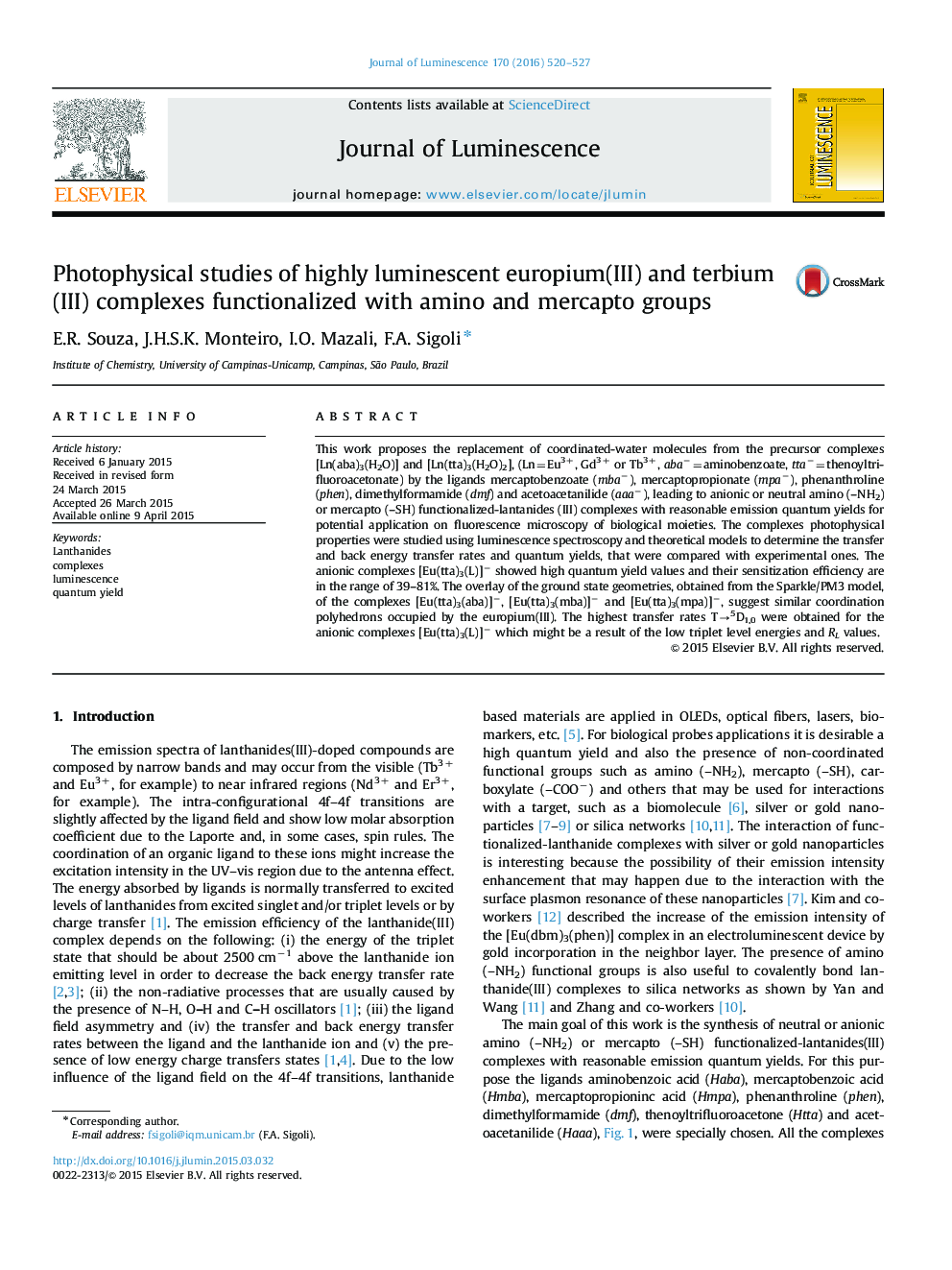| Article ID | Journal | Published Year | Pages | File Type |
|---|---|---|---|---|
| 5399017 | Journal of Luminescence | 2016 | 8 Pages |
Abstract
This work proposes the replacement of coordinated-water molecules from the precursor complexes [Ln(aba)3(H2O)] and [Ln(tta)3(H2O)2], (Ln=Eu3+, Gd3+ or Tb3+, abaâ=aminobenzoate, ttaâ=thenoyltrifluoroacetonate) by the ligands mercaptobenzoate (mbaâ), mercaptopropionate (mpaâ), phenanthroline (phen), dimethylformamide (dmf) and acetoacetanilide (aaaâ), leading to anionic or neutral amino (-NH2) or mercapto (-SH) functionalized-lantanides (III) complexes with reasonable emission quantum yields for potential application on fluorescence microscopy of biological moieties. The complexes photophysical properties were studied using luminescence spectroscopy and theoretical models to determine the transfer and back energy transfer rates and quantum yields, that were compared with experimental ones. The anionic complexes [Eu(tta)3(L)]â showed high quantum yield values and their sensitization efficiency are in the range of 39-81%. The overlay of the ground state geometries, obtained from the Sparkle/PM3 model, of the complexes [Eu(tta)3(aba)]â, [Eu(tta)3(mba)]â and [Eu(tta)3(mpa)]â, suggest similar coordination polyhedrons occupied by the europium(III). The highest transfer rates Tâ5D1,0 were obtained for the anionic complexes [Eu(tta)3(L)]â which might be a result of the low triplet level energies and RL values.
Related Topics
Physical Sciences and Engineering
Chemistry
Physical and Theoretical Chemistry
Authors
E.R. Souza, J.H.S.K. Monteiro, I.O. Mazali, F.A. Sigoli,
